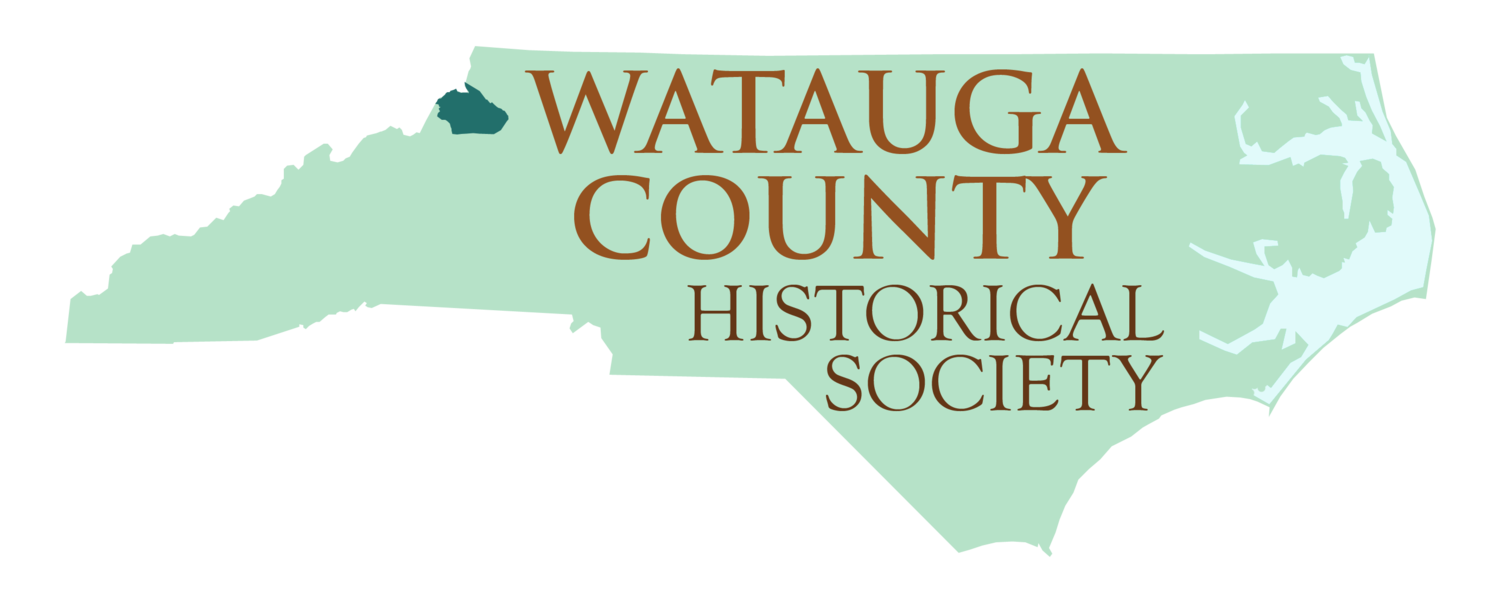By Eric Plaag, Chairperson, Digital Watauga Project
As many of you know, the Digital Watauga Project is dedicated to digitizing the photographic images and documents associated with the history of Watauga County, North Carolina. In some cases, the large, cohesive collections that we add to Digital Watauga include some images that document locations, people, or events from outside of Watauga County. One example is the Bobby Brendell Postcard Collection, which includes a handful of postcard images from the Asheville area, Ashe County, and Avery County that Brendell inadvertently included in his Watauga County postcard containers. We chose to retain these images as they represent Brendell’s management and cataloging of his collection and highlight parallels between Watauga County and those other areas in western North Carolina. Another is the Junaluska Heritage Association Collection, part of which contains images of soldiers serving in the European theatre after World War II. We included these photos in Digital Watauga because most of them document Junaluska residents during their period of military service overseas.
Sometimes, though, we are offered collections that have compelling historical value but have little or no relation at all to Watauga County. These collections force the Digital Watauga Project Committee to confront difficult choices about maintaining the integrity of our project and its mission statement while also serving the needs of our donors by identifying appropriate public outlets for and providing best practices guidance on the long-term preservation of their collections. One such recent donation involved a small group of commercially produced postcards from the 1930s to the 1950s that consisted entirely of scenes in central western North Carolina and eastern Tennessee, primarily in the Asheville area and the Great Smoky Mountains. Because the collection was not directly relevant to our mission, our only choice was to return the collection to the potential donor with our sincere thanks for the opportunity to review the collection. We also recommended to the donor alternative repositories where the postcards might find a more appropriate home.
Earlier this year, an anonymous donor approached us with another such collection that, quite frankly, startled us because of its stunning historical significance. Consisting of thirteen photographic negatives, the collection’s images were originally produced by a US Army soldier who assisted with the liberation of various sub-camps in the Buchenwald Concentration Camp system near Weimar, Germany, on April 4 and April 11, 1945, prior to the arrival of high-ranking Army officials on April 14 and their official, documentary photographers on April 24. As you might expect, most of the images are harrowing and deeply disturbing. They feature many of the scenes one might expect to find in a raw, unfiltered, documentary view of one of the worst genocides ever perpetrated on the planet.
Upon receiving the collection, our digitization technician (Paul Fuller) worked with one of our interns (Grayson Butler) to digitize the images so that we could first confirm that they were really from Buchenwald. I personally conducted the research that confirmed their authenticity. Particularly helpful were two images portraying the body of a Nazi SS officer who had been badly beaten and stabbed during an uprising at the Ohrdruf sub-camp just prior to the arrival of US forces. These two images from the new collection show the man’s body before it was moved into position near a second Nazi SS officer’s body, as seen in a relatively well-known color photograph taken by Lt. Col. Parke O. Yingst (the later, more famous Yingst image can be seen HERE, but readers are warned that the photo is quite graphic). Other images among the negatives from our potential donor were clearly from the main Buchenwald camp.
The United States Holocaust Memorial Museum in Washington, DC, October 27, 2016
After lengthy consideration of these facts and my own confidential conversations with the prospective donor about the origin and significance of the negatives, the Digital Watauga Project Committee (DWPC) voted unanimously to decline acceptance of the negatives as a gift to Digital Watauga. In addition, the DWPC authorized me to meet with the donor again, recommend to the donor that the negatives be given to the United States Holocaust Memorial Museum (USHMM), and communicate with the USHMM on behalf of the donor.
While it took some time to work out all of the details, I finally traveled this past Thursday to Washington, DC, to meet on the donor’s behalf with Chief Acquisitions Curator Judith Cohen at the USHMM and hand-deliver the negatives to the Museum's permanent care. As Ms. Cohen indicated, some of the images depict scenes not previously known to the Museum, particularly those showing survivors. Staff at the USHMM expressed several times how grateful the Museum is to receive the images and add them to their collection.
The Digital Watauga Project is proud and honored to have been part of helping our prospective donor find the right archival home for this important collection of photographic negatives. We hope this peek behind the scenes highlights Digital Watauga's level of commitment to preserving our collective history, whether it involves local people, places, and events from here at home in Watauga County or the most historically significant moments from half a world away.


